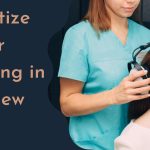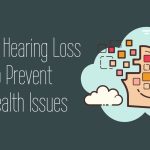It is often difficult to identify the exact sources of hearing loss, as there are many underlying conditions that can cause it. Exposure to noise, however, is a major contributor to much contemporary hearing loss and is most likely responsible for the lion’s share of hearing loss among young people.
While hearing loss was on the decline in the early 2000s, it has unfortunately made a resurgence in the last decade. While about 10% of millennials have measurable hearing loss, about 17% of Gen-Z’ers have it. This is especially worrying when we consider that Gen-Z is the younger generation.
The older, wiser people among us may recall how easy it was to disregard warnings in our younger days. We can remember feeling impervious to the hazards that we were routinely told to avoid, and wearing hearing protection may have ranked chief among these. Hearing protection can be bulky, uncomfortable, and easy to forget. We may even have had the experience of exposing ourselves to loud sounds until our ears rang, and remember the ringing going away after a day or two.
Those experiences most definitely left us with some degree of hearing loss, but it turns out that hearing loss does not require a painful or even obviously “too loud” sound level to set in. Sound as low as 85 dBA (decibels A-weighted) can cause permanent hearing loss after about 8 hours of exposure. For every additional 3 dBA of sound, the safe time of exposure is cut in half. At 100 dBA, it only takes about 15 minutes to cause hearing loss. 85 dBA is about the volume level of a gas-powered lawn mower, and 100 dBA is the average sound level at a high school dance.
About 22 million workers in the U.S. are exposed to hazardous noise levels on the job. It has long been the case that employers need to limit noise exposure for their employees. They are required to either maintain safe sound levels (less than 85 dBA) in work areas or provide hearing protection. Hearing protection is often the most realistic means of meeting the requirement, but it only works if employees use it!
A study completed last year by NIOSH (National Institute for Occupational Safety and Health) found that more than half of workers did not use hearing protection during periods of hazardous noise exposure. The study used data collected from National Interview Surveys in 2007 and 2014. Between those two years, the numbers remained about the same: about 53% of workers did not use hearing protection while being exposed to hazardous sound levels on the job.
Industries where hearing protection was disregarded most routinely were Accommodation and Food Services (90%), Health Care and Social Assistance (83%), and Education Services (82%). It is not known why workers in these industries are so unlikely to protect themselves, though intuitively we might understand that we don’t often picture a chef wearing earplugs, even though they may be exposed to dangerous sound levels in the kitchen.
Some of the industries where workers reported not using hearing protection, however, were industries in which the noise hazard is widely understood.These include Agriculture, Forestry, Fishing and Hunting (74%) and Construction (52%).
Unsurprisingly, younger workers (age 18–25) were among those least likely to use hearing protection when necessary. Female workers were also less likely than male workers to wear their hearing protection. Both these findings are consistent with other studies into the subject. A new finding, however, is that current smokers are also less likely to wear hearing protection. This is unfortunate because smoking also makes it more likely that noise exposure will result in hearing loss. A Japanese study, for example, found that workers who smoked were more likely to have hearing loss at frequencies consistent with noise exposure than others who performed the same job but didn’t smoke.
One reason that workers may not use hearing protection when necessary is that some hearing protection over-protects. If the sound level on the job reaches 90 dBA but workers are issued earplugs that attenuate 30 dBA, they are mimicking the experience of having hearing loss. This makes it more difficult to communicate with other workers, can give them a sense of unreality or separation from the environment, and even makes accidental injury more likely. Hearing protection needs to be matched for the job at hand.
Outreach is necessary to ensure that the work culture embraces the use of hearing protection. Hearing loss may be a near-inevitability for most of us at some point in our lives, but the added hearing loss from noise exposure does not need to be a part of that.
If you spend a lot of time around loud sound, custom earplugs are a great option to reduce it to a safe level while still providing a natural sound and maximum comfortability. Make an appointment for a hearing test today and find out what custom earplugs can do for you!






